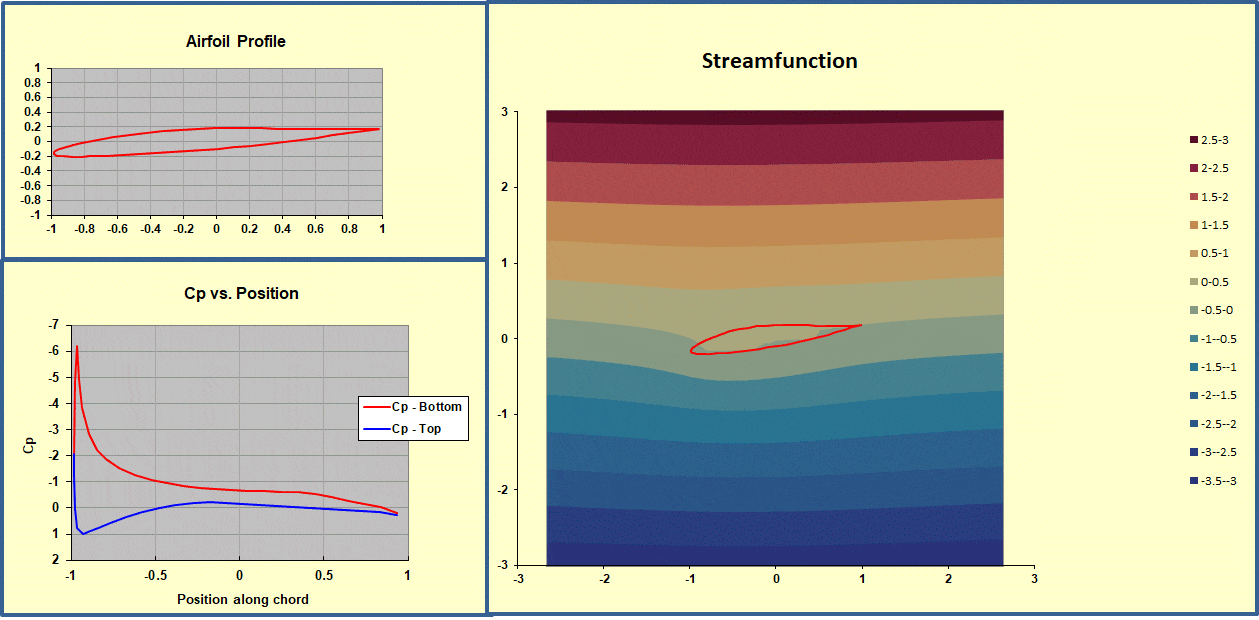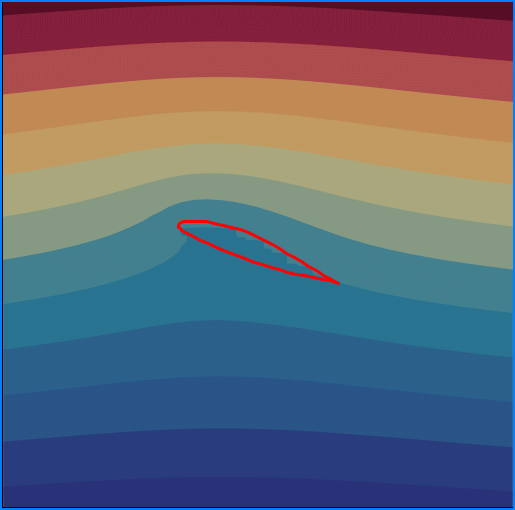Panel Method Spreadsheet (Updated 1/17/2025)
This Excel workbook implements the vortex panel method for a 2D, lifting airfoil. The algorithm is from Kuethe and Chow, Foundations of Aerodynamics, 4th Edition, Wiley (1986). Detailed implementation instructions are provided in a separate pdf file. Inputs are coordinate data for the airfoil (from a source such as Abbott and von Doenhoff, Theory of Wing Sections, Dover (1959) or the UIUC airfoil database) and the angle of attack. This being an inviscid flow calculation, the flow will remain attached for any angle of attack. The calculation returns the pressure coefficient (Cp) as a function of position as well as streamline plot. The user can determine the section lift coefficient etc., using these local results.

Ideal flow over an airfoil using the Panel Method. Note that since this flow is being treated as ideal in this calculation, it stays attached at the trailing edge for huge angles of attack. The panel method forces the flow to be parallel to the airfoil surface at what are known as control points. Color changes within the airfoil are not to be considered.

